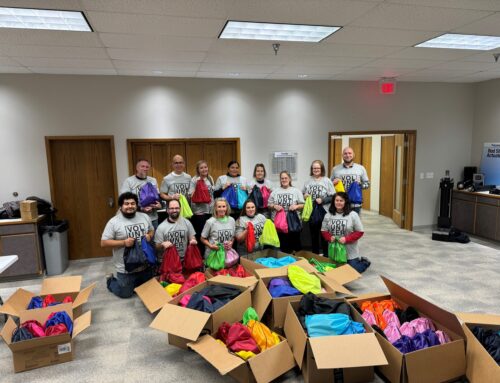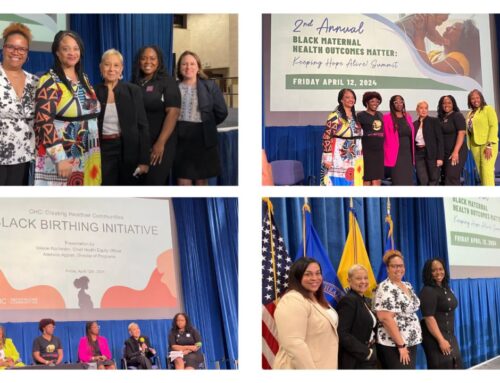Generational Giving & Communication Tips
Understanding generational differences in philanthropy is indeed crucial to effectively engage with donors and develop tailored strategies. Here’s a breakdown of the characteristics and giving patterns associated with each generation and a tip to help engage individuals in that generation:
Matures (born before 1946):
- Matures, also known as the Silent Generation, were influenced by events like World War II and the Great Depression.
- They tend to value loyalty, duty, and traditional philanthropic approaches.
- Matures often prefer giving through direct mail or check donations and may prefer established organizations.
- The Silent Generation – those born between 1927 and 1946 – give an average of $1,367 annually per person. 88% of them are donors.
- While they make up only 11% of the US population, they account for 26% of all giving. And they have slightly different giving habits. They prefer to give to organizations that reach them via direct mail and to causes that they see in the news.
- Silent Generation donations support:
- Veterans’ causes
- Local social services
- Emergency and disaster relief fundraising events and efforts
- Local places of worship
Communication Tip: While this generation is disappearing you may have retirees that contributed regularly while active employees with the company. Reach out to these individuals early in your campaign to offer them the option to continue to support the campaign. A handwritten note expressing gratitude for their time at the company and value for their contribution will go a long way.
Baby Boomers (born between 1946 and 1964):
- Baby Boomers experienced significant social and cultural changes, including the civil rights movement and the advent of technology.
- They are known for their strong work ethic and desire to make a difference.
- Boomers are generally generous donors, and they may contribute larger sums of money than younger generations.
- They often prefer to give through traditional channels, such as direct mail, events, and personal interactions.
- Baby Boomers are quite generous, with a total giving of an average of $1,212 per person per year. That’s nearly three-fourths – 72% – of the entire Baby Boomer Generation, accounting for 43% of all donations made each year.
- The Baby Boomers are the old hippies of the 1960s, and many who were activists then are still supporting causes today. While their long hair may be thinning and even gone, their love of social justice, world peace, and environmental issues is still going strong.
- This may explain why Baby Boomers’ donations are the biggest supporters of:
- Local social services nonprofits
- Animal organizations
- Children’s charities
- Human rights and international affairs
- Local places of worship
Communication Tip: Respect should be paramount. Whether you are discussing a new idea or working through conflict, respecting a boomer’s life experience and opinion is key to effective communication. Like the Mature generation, gratitude, and acknowledgement for their contribution as both an employee and a donor could go far. Just make it authentic and personal to them.
Generation X (born between 1965 and 1980):
- Gen Xers witnessed the rise of technology and globalization, shaping their perspectives and giving habits.
- They value authenticity, work-life balance, and are often motivated by causes that align with their personal values.
- Gen X donors may be more inclined to research and vet organizations before donating.
- They are comfortable with online giving platforms and are more likely to engage with organizations through digital channels.
- While there are fewer Gen X donations than their younger Millennial counterparts, Gen Xers are more likely to start fundraising campaigns, as well as more likely to volunteer their time and efforts to worthy causes.
- The average Gen X donation totals $732, with 59% of Generation X being regular donors.
- And while Millennials are most often influenced by social media posts and online donations, Gen Xers report that email is the most influential method of reaching them.
- Gen Xers give to the following:
- Local social and human services organizations
- Animal organizations
- Children’s charities
- Local places of worship
Communication Tip: Transparency and impact are key. Gen X will decide whether to donate based on if they can see their gift’s impact. Translate dollar amounts into tangible results and provide proof through visual content like photos and videos of the nonprofits work being carried out on the ground. Providing this essential information up front can help you build trust and win over these discerning donors.
Millennials (born between 1981 and 1995):
- Millennials, also known as Gen Y, grew up in the age of the internet and are considered digital natives.
- They are socially conscious and passionate about causes that address social and environmental issues.
- Millennials are more likely to engage with organizations through social media and online platforms.
- They appreciate transparency and want to see the direct impact of their contributions.
- Crowdfunding and peer-to-peer fundraising initiatives are often successful with millennial donors.
- The average charity or nonprofit will have Millennials making up 5 to 10% of its donors. Millennials prefer to donate money through online platforms. They like setting up recurring donations. Over 40% who give do so with a monthly deduction to their credit or debit card.
- Millennials are also the most likely to use their mobile devices — their phones, tablets, and laptops — to research charities, donate money, and advocate for their latest cause.
- Millennials give $481 to charity annually. 84% of millennials give to charity and nonprofits.
- Millennials tend to support the following charities:
- Children’s charities
- Health and medical nonprofits
- Local places of worship
- Human rights and international affairs groups
Communication Tip: It’s no shocker that Millennials want to engage with nonprofits online. When beefing up your online giving experience to draw in Millennials, you need to make sure it’s mobile-friendly: 25 percent of donors use their phones to find nonprofits they were previously unaware of, and 25 percent also use their phones to complete donations. The best way to keep Millennials engaged is to use responsive design. This allows emails, websites, and donation pages to be formatted properly across mobile devices.
Generation Z (born after 1995):
- Gen Z is the youngest generation and has grown up in an era of rapid technological advancements.
- They are highly connected, socially aware, and concerned about global issues.
- Gen Z donors value authenticity, diversity, and inclusivity in the organizations they support.
- They are adept at using digital platforms, including mobile giving apps and social media campaigns.
- Unlike millennials who grew up in a mostly positive and stable economic environment, Gen Z has been exposed to things like economic instability, polarizing social issues, and larger-than-life global challenges. As a result, and partly because of the hyper-awareness of this driven by technology and social media, Gen Z is hungry to make this world a better place.
- For example, look at some of their charitable giving habits:
- 32 percent of Gen Z donate their own money.
- 26 percent of 16 to 19-year-olds practice volunteering on a regular basis
- 10 percent want to start their own nonprofit organization.
Communication Tip: Having grown up in a technological age, Gen Z will know inauthentic marketing when they see it. That is, they expect your messaging to cater to their unique lifestyles and interests.
For example, about 60 percent of Gen Z wants their workplace to do social good in the world. So, a company that actively supports and reports their philanthropic engagement publicly on social media could help drive this generation of employees to engage resulting in new donors.
It’s worth noting that these generational traits are generalizations, and individual preferences and behaviors can still vary within each generation. Strive for a multi-channel approach, adapting their strategies to cater to the preferences and communication styles of different generations. Personalized engagement, transparency, and demonstrating the impact of donations are important factors across all generations.








